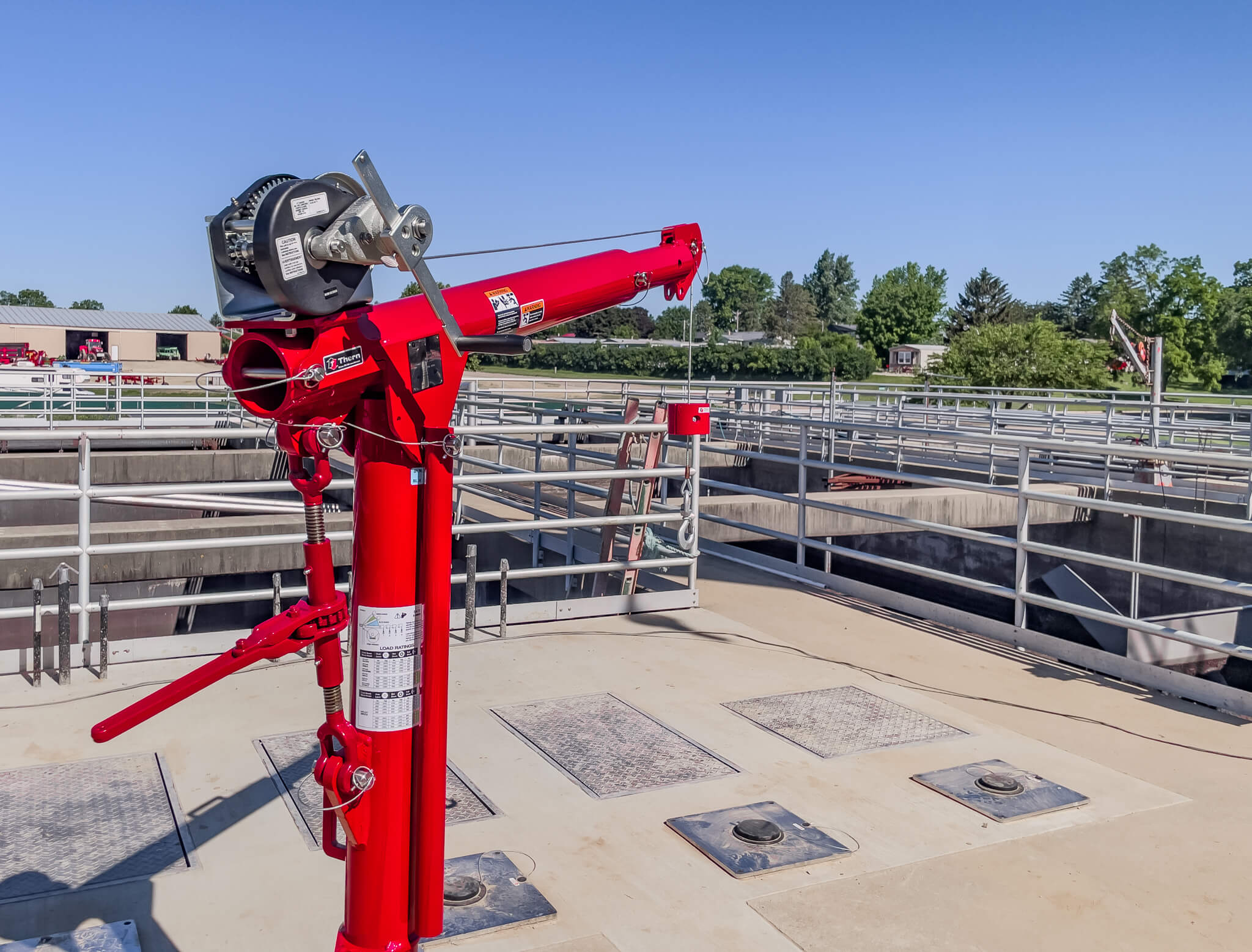Know Your Options Before You Lift
Davit cranes are some of the most versatile and capable crane options available, offering reliable lifting, lowering, and positioning performance for all kinds of tasks. From construction to manufacturing, water treatment facilities, bulk material handling, defense, theater and entertainment venues, and more, davit cranes can be found across a huge range of industries and applications.
Davits can be more flexible and multipurpose than other cranes, but finding the right davit, and the right hoisting mechanism, is still important for ensuring peak performance and sustained durability. This guide covers how to choose between manual and electric winches for specific davit applications and common uses for each crane type.
What Is a Manual Davit Crane Winch?
A manual winch requires human effort to wind or unwind the cable, allowing the davit to raise or lower loads. While some hand winches can lift plenty — our Spur Gear series has options that have a capacity up to 10,000 pounds — manual winches are much more common for lifting lightweight loads and in applications with lower lift frequencies.
While heavy-duty lifting capacity isn’t generally a strength, davit cranes with manual winches do have plenty of benefits, including:
- Lower cost
- Reliability
- Simple operation
- Usable in situations where power isn’t available
Davits that use manual winches are often portable and can be especially useful in applications where a loss of power and crane functionality would be dangerous, such as in personnel rescue.
Some manual winches, like worm gear models, are drill driveable with corded or cordless drills. This makes them easier on the operator while still being cost-effective and capable of working in areas where power is not available.
What Is an Electric Winch for Davit Cranes?
A davit with an electric winch uses electricity to supply the power to the hoist or winch and uses a control interface to lift, lower, and hold loads. Both portable and stationary davits can use electric winches and take advantage of their benefits that include:
- Faster lifting
- Capable of repetitive, high-frequency lifting
- Reduced physical labor and potential for injury or strain
- Customizable controls for enhanced precision and control
Breaking Down the Differences Between Manual and Electric
Outside of the main difference in how the crane’s winch operates, there are plenty of differences between cranes that use manual and electric winches that you should consider before choosing which is best for you.
- Lifting speed — electric winches can lift loads faster and more consistently than manual option
- Setup needs — manual winches are faster and easier to set up
- Energy requirements — the type of energy required for both types of cranes is different, so weighing the cost and value of human labor versus electricity will vary based on your specific application
What to Factor Before Making Your Choice
Deciding on an electric or manual winch for your davit crane requires you to take stock of your application requirements, project context, location, and long-term considerations. For instance, if you need a budget-friendly crane that will be used infrequently — perhaps just a couple times a year — a manual winch could be the right call. Manual winches are also good for shorter lifting distances and can function far from reliable electric power. On the other hand, if you have a high-capacity davit that needs to be lifting and lowering throughout the day with reliable power, an electric winch is likely the best choice.
The health and safety of the operator should be a critical factor when choosing a winch for your davit. For instance, if you are lifting or lowering long distances, an electric winch (or a drill driveable manual worm gear winch) will be safer and easier to operate, regardless of how often it is used.
When considering your budget, keep in mind that while a davit crane with a manual winch is going to cost less upfront, the long-term efficiency and reduced risk of worker injury with repeated use that davits with electric winches provide can improve your ROI over time.
Choosing the Crane That Works for You
Finding the perfect davit comes down to the best fit of budget, environment, lifting needs, and power availability — keeping all of these factors in mind when making your decision is the best way to make sure you get it right. Once you’ve made your decision, check out the high-performance manual and electric winches we offer for our various davit cranes Thern has to offer. If you have unique needs, don’t worry. Our custom engineering services can design custom manual or electric winches that are built specifically for your davit crane.
If you have questions about whether you need an electric or manual winch for your davit crane, or want to get more information about any Thern products, reach out. We’d be happy to help you find the answers you’re after to ensure you get the exact crane you require.
